|
British Columbia Trailer License Plates |
||||||||||||||||||||||||||||||||||||||||||||||||||||||||||||||||||||||||||||||||||||||||||||||||||||||||||||||||||||||||||||||||||||||||||||||||||||||||||||||||||||||||||||||||||||||||||||||||||||||||||||||||||||||||||||||||||||||||||||||||||||||||||||||||||||||||||||||||||||||||||||||||||||||||||||||||||||||||||||||||||||||||||||||||||||||||||||||||||||||||||||||||||||||||||||||||||||||||||||||||||||||||||||||||||||||||||||||||||||||||||||||||||||||||||||||||||||||||||||||||||||||||||||||||||||||||||||||||||||||||||||||||||||||||||||||||||||||||||||||||||||||||||||||||||||||||||||||||||||||||||||||||||||||||||||||||||
For collectors of the province's Trailer plates, one of the more challenging tasks is attempting to track the lineage of the type over the past century. There are effectively seen to be three main types, and the following series of links will take you to the respective page for each plate type: |
Quick Links: |
Commercial Trailers | Utility Trailers | Trailer Floater |
*
* * * * |
It is now known that the first Trailer plates appeared in 1921: |
| 1921 - 1922 | |||||||
1-digit
|
3-digit
|
|
|||||
1-digit
|
2-digit
|
|
|||||
| 1923 - 1926 | |||||||
1-digit
|
2-digit
|
|
|||||
What has caused some confusion in the past, however, is that the design and serials used on the first Trailer plates are strikingly similar to Motorcycle plates from this era: |
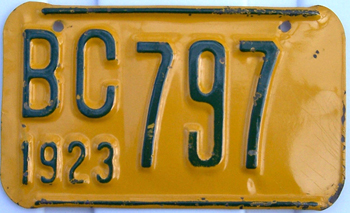 Trailer license plate |
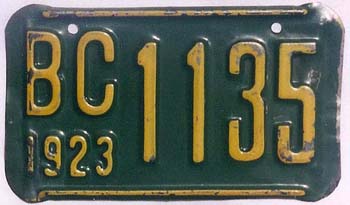 Motorcycle license plate |
As can be seen from the two examples shown above, the only feature that distinguishes the first trailer plate from the motorcycle plates of that same year was the use of a reverse colour scheme of green-on-yellow. |
||
While the use of reverse colour-coding would be changed in subsequent years, presumably to assist with identification, the province would take the additional step, starting in 1927, of adding a letter prefix to the serial. Not surprisingly, given that a 'D' prefix was already in use for the Dealer plates, a 'T' was added. |
||
For keen students of our Vehicle Registration Data Archive, you will know that the 'T' prefix had previously been use in 1924 for Truck plates, but that this had ceased after only a single year. |
||
|
1-digit |
2-digit |
 |
|
||||
1-digit |
2-digit |
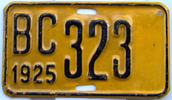 |
|
||||
1-digit |
2-digit |
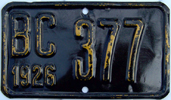 |
|
Unfortunately, there are few records available for the years 1927 to 1948, but it is interesting to note that, in 1927, the total number of trailer licences issued in the province was only 420 - which likely means that, apart from the `T`prefix, the serial used on the plates would have been `000`, and that this likely conintued until about 1930 when the number of trailer licences neared 1,000 and a `0000` format may have been required. |
Milestone from this period include trailer licences issued surpassing: |
|
|
To accommodate the increase in registered trailers beyond the four-digits generally associated with the Trailer license plate, a small run of 'TR' prefix plates were issued in 1948. |
*
* * * * |
In 1949, the province re-designed the Trailer plates by dropping the 'T' prefix and replacing it with the full word (i.e."Trailer") across the top. The plates were also marginally increased in width. |
| 1949 - 1954 | |||||||||||
1-digit
|
3-digit
|
|
|||||||||
1-digit
|
2-digit |
|
|||||||||
1-digit
|
2-digit |
3-digit |
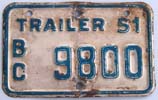 |
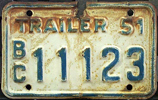 |
|
||||||
1-digit
|
2-digit |
 |
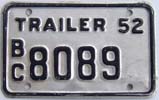 |
5-digit
|
|
||||||
1-digit
|
2-digit |
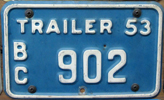 |
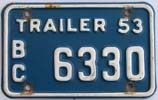 |
5-digit
|
|
||||||
1-digit
|
2-digit |
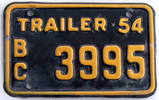 |
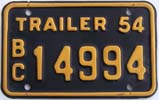 |
|
|||||||
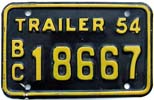 |
|||||||||||
Although not instituted for Trailer plates, the Province began what was to be a five year experiment with multi-year plates for passenger vehicles in 1952 (i.e. the plate issued in 1952 was to be used to 1956 and renewed subsequent years with tabs). |
||
This saw the introduction of the ill-fated "Totem" design on a rather striking aluminium base. Unlike earlier bases, which had been manufactured using steel, the 1952 Trailer plate was also made of aluminium. |
||
For a variety of reasons, the "Totem" was abandoned within two years, and this decision lead the Province to cease the use of aluminium on passenger plates in 1955, and on non-passenger plates, such as the Trailer, in 1954. |
||
As a result, one can detect a subtle change in the weight of the 1954 Trailer plates in the higher numbers as the aluminium base used from the start of the series is replaced with a steel base: |
||
|
||
Conveying this difference through the use of images is a rather difficult task, however, it is hoped that the two pictures shown above do just that. |
||
Simply put, aluminium does not rust (it just oxidizes) and despite some rubbing around the bolt holes on plate No. 6881, there is no rust present. Conversely, plate No. 18007, which was manufactured on the steel base is showing considerable amounts of rust. |
||
It remains unknown where the exact changeover between the two materials occurred in the series ... |
*
* * * * |
In 1955, the province reclassified trailers into two different types and created a new plate; the "Utility Trailer", to reflect this change: |
.jpg) Commercial Trailer license plate |
.jpg) Utility Trailer license plate |
It is generally thought that the new "Utility Trailer" plates were assigned to trailers used primarily for residential purposes, such as boat trailers (it is understood that there may have been a weight limit of 1,500 pounds). The Utility plates would be in use from 1955 to 1973 and would undergone one minor design change (in 1969 when the date began to be stamped in the top right corner of the plates). |
| To visit the page related to "Utility Trailer" plates, Click here. |
The standard trailer plate design that had been in use since 1949 would continue, but would now be associated with Commercial trailers and would be used, unchanged, through to 1971. |
| 1955 - 1970 | |||||||||||
1-digit
|
2-digit |
3-digit
|
5-digit
|
|
|||||||
1-digit
|
2-digit |
5-digit
|
|
||||||||
1-digit
|
3-digit
|
5-digit
|
|
||||||||
1-digit
|
2-digit |
3-digit
|
5-digit
|
|
|||||||
1-digit
|
2-digit |
3-digit
|
5-digit
|
|
|||||||
1-digit
|
2-digit |
3-digit
|
|
||||||||
1-digit
|
2-digit |
3-digit
|
|
||||||||
1-digit
|
2-digit |
4-digit
|
5-digit
|
|
|||||||
1-digit
|
.jpg) |
3-digit
|
4-digit
|
|
|||||||
1-digit
|
2-digit |
5-digit |
|
||||||||
1-digit
|
2-digit |
5-digit |
|
||||||||
1-digit
|
2-digit |
4-digit |
|
||||||||
1-digit
|
2-digit |
4-digit |
|
||||||||
1-digit
|
2-digit |
4-digit |
5-digit |
|
|||||||
1-digit
|
2-digit |
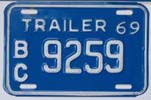 |
|
||||||||
1-digit
|
2-digit |
3-digit |
4-digit |
|
|||||||
| 1971 | ||||||||||
60,000 block |
|
|||||||||
*
* * * * |
After decades of having the colour-scheme of non-passenger plates, such as the Farm Tractor; Farm Truck; Dealer; Industrial Vehicles; Logging Trucks; Manufacturer; Prorate; Transporter; Truck; and, of course, Trailer plates mirror that of passenger plates, the province instituted a change in order to separate the different use types. |
As a result, the colour of the Commercial Trailer plate in 1972, was the same red-on-white that appeared on the other plate types listed above (a trend that would be continued through to the introduction of the "Flag" graphic in 1985, when all plate types would, once again, generally display the same design and colour scheme, irrespective of use). |
In addition, the dimensions of the plate were increased to the standard 12 inch by 6 inch. The generic "TRAILER" title was also replaced with the more accurate "COMM-TRL-" designation. Decals would be used to renew the plates in 1974 and again in 1975. |
| 1972 - 1975 | ||||||||||||||
 |
 |
 |
 |
|
||||||||||
The application instructions provided for the renewal decal in 1974 required that it be placed in the lower left hand corner, while in 1975 the renewal decal was to be placed in the lower centre of the plate. |
*
* * * * |
1976 was to be the first time that a single letter was used a suffix on the Commercial Trailer Plate, while renewal boxes were provided at both the top left and right hand corners of the plates: |
| 1976 - 1978 | ||||||||
 |
|
|||||||
According to the "Application Instructions" included on the back of the registration decals for 1977 (keeping in mind that Trailers and Motorcycles were to use the same decal), motorists were to apply the decal to the "Top Centre" of the plate - which was a repetition of the directions placed on the 1976 decals: |
|||||
|
|||||
While this worked quite well with the Motorcycle and Utility Trailer plates (as can be seen in the image above), it presented a slight challenge on the Commercial Trailer plate. |
|||||
Taking direction from what was required for Farm and Industrial Vehicle plates (these being the only other plate types employing the same orange-on-white design and requiring decal renewal in 1977), the decals should have been placed in the upper right decal box. But, as can be seen by the plate shown in the gallery above, this did not always occur. |
|||||
Not surprisingly, the "Instructions" were edited for 1978 so that motorists were advised to place that year's decal in the "upper right decal box" for Commercial Trailers and at the "top centre" for Motorcycles and Utility Trailer plates. |
|||||
| Trailer Decals of the 1970s | ||||
 |
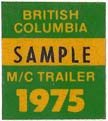 |
 |
 |
 |
*
* * * * |
With the switch to a new base plate in 1979, the series was recommenced at 0000-0W in the new green-on-white design, which now included the standard decal box located at the bottom centre of the plate: |
| 1979 - 1985 | ||||||||||
 |
 |
* The 1985 "Flag"
series |
||||||||
 |
||||||||||
"X"
suffix was excluded as it is used on Industrial vehicles. |
||||||||||
*
* * * * |
With the introduction of the "Flag" graphic base in 1985, the Commercial Trailer design reverted back to generally being indistinguishable with that used on passenger plates for the first time since 1971. The new design also marked the first time since 1949 that the plate did not display the word "Trailer" (or an easily identifiable abbreviation), thereby making it relatively anonymous within the family of "Flag" plates: |
| Flag Graphic Base - 'Y' Suffix | ||||||||||||||
 |
|
|||||||||||||
| Flag Graphic Base - 'V' Suffix | ||||||||||||||||||||
 |
|
|||||||||||||||||||
| Flag Graphic Base - 'W' Suffix | ||||||||
 |
 |
|
||||||
 |
||||||||
"X"
suffix was excluded as it is used on Industrial vehicles. "Z" suffix is thought to have been excluded due to similarity with the number two (i.e. "Z" / "2") "A"suffix was excluded as it is used on Agricultural vehicles. |
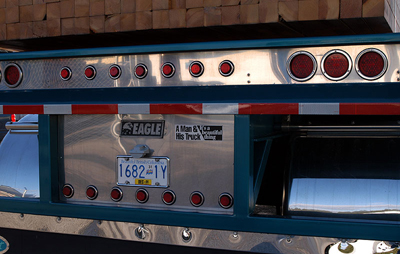 |
 |
Shown above is the type of trailer that one would normally expect a trailer plate to appear on. |
|
| "Non-Expiry" Plates | ||
Starting
in the late summer of 2006, a new type of decal began to be
seen affixed to Commercial Trailers plates in British Columbia.
Following some extensive background work undertaken by the
BCpl8s.ca research team, it has been determined that these
decals (as shown below) are "Non-Expiry" and intended
exclusively for Commercial Trailers. |
||
|
||
Spawned from the Provincial government's "Regulatory Reform Initiative", it appears that these decals are designed to reduce the administrative burden on commercial vehicle operators. According to the Minister Responsible for Regulatory Reform, the Honourable Rick Thorpe (MLA - Okanagan / Westside), the benefit to operators was in "eliminating the need to track down trailers potentially anywhere in North America in order to affix an annual decal." |
||
In order to achieve this reform, the Provincial government amended Section 12 of the Motor Vehicle Act to allow ICBC to to issue a decal that will not expire for commercial trailers (i.e. Bill 31 - Public Safety and Solicitor General Statutes Amendment Act 2006). An announcement made on September 18, 2006, stated that the new decal will replace both the month/year and day decals that had appeared on commercial trailer plates prior to the amendment of the Act, and it was expected that all commercial trailers would begin displaying the non-expiring decal by August 31, 2007. |
| Suffixes | |||||||||||||||||||
|
|||||||||||||||||||
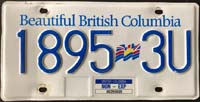 |
|||||||||||||||||||
An interesting statistic that resulted from this research was that, as of January 1, 2005, the Commercial Vehicle Safety & Enforcement Division of the Ministry of Public Safety and Solicitor General estimated that there were approximately 71,000 commercial trailers operating in British Columbia. |
With
the month/year decal having now been eliminated from Commercial
Trailer plates, collectors will have to satisfy themselves
with obtaining the various letter suffixes. It is thought
that when the "W" suffix common throughout the 1990s
was exhausted, ICBC reverted to the front of the alphabet
with the "B" suffix followed by "C" and
'D' in late 2011. |

| Olympic Trailer Plate |
In 2007, the Trailer plate was one of the lucky six plate types along with passenger, truck, motorcycle, farm truck and utility trailer to be made available on the optional 2010 Olympic Winter Games base. |
The suffix used on the plate is "U", which should have been used sometime in the 1990s before the Corportation began to forward through the alphabet after the "W" suffix plates had been exhausted. Only 227 Trailer plates were issued, and with the exhaustion of the 'D' suffix in 2016, the regular "Flag" design picked up the remainder of the 'U' suffixes. |
| Decal Re-design (Sept./Oct. 2009) |
Although
modest in terms of design change, the province has instituted
a minor adjustment to the "NON-EXP" decals by printing
the registration number of the decal in black text on a clear
background surrounded by a blue outline. |
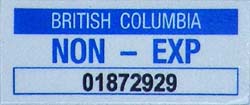 |
We
here at BCpl8s.ca suspect that the change will lower manufacturing
costs by reducing the amount of blue ink used on the decals
(while legibility might also have been a consideration). |
For
reasons unknown, the plates appear to be still issued with
date decals despite being "non-expiring" ... go
figure ... |
| A Suggested Redesign of the Plate |
Given all the cost cutting that ICBC has been undertaken in recent years, including a desire to decrease the cost of decals, it seems odd that it maintains the requirement for a Non-Expiring decal for commercial trailers that is seemingly expensive and burdensome. |
A review of other jurisdictions shows that it need not be this way and that there is an incredibly simple re-design elemnt that ICBC could pursue; include the words "Permanent Trailer" on the sheeting of the plate! |
 |
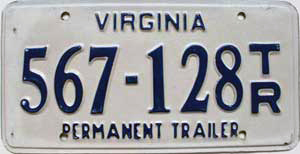 |
 |
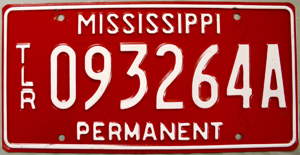 |
 |
|
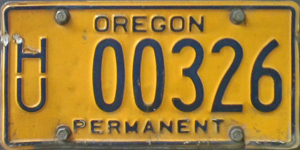 |
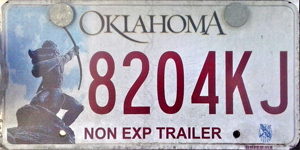 |
Quick Links: |
Commercial Trailers | Utility Trailers | Trailer Floater |
Antique | APEC | BC Parks | Chauffeur Badges | Collector | Commercial Truck | Consul | Dealer | Decals | Driver's Licences | Farm | Ham Radio | Industrial Vehicle | Keytags | Lieutenant Governor | Logging | Manufacturer | Medical Doctor | Memorial Cross | Motive Fuel | Motor Carrier | Motorcycle | Movie Props | Municipal | National Defence | Off-Road Vehicle | Olympics | Passenger | Personalized | Prorated | Prototype | Public Works | Reciprocity | Repairer | Restricted | Sample | Special Agreement | Temporary Permits | Trailer | Transporter | Veteran | Miscellaneous |
© Copyright Christopher John Garrish. All rights reserved.

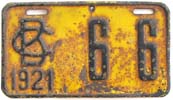
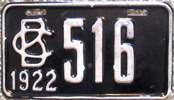




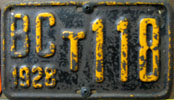

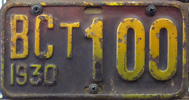
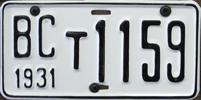


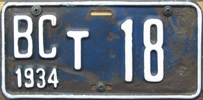

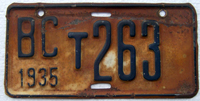

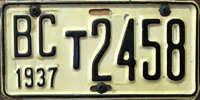

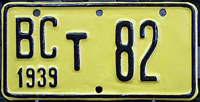
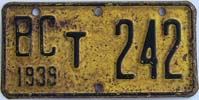
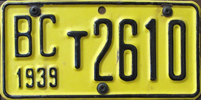
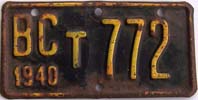
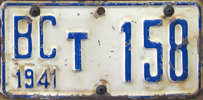

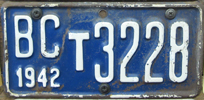

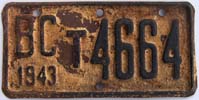

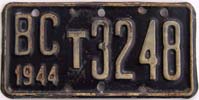
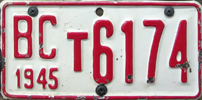

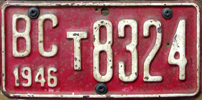

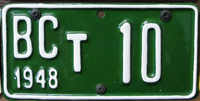
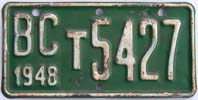
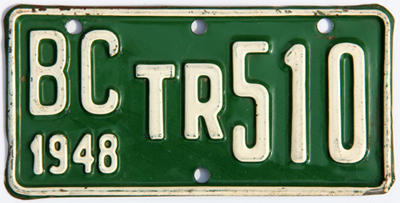
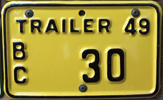

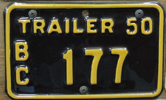

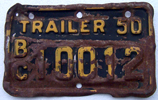
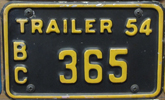
.jpg)
.jpg)
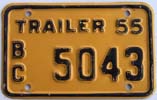
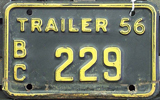
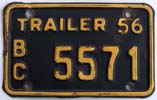
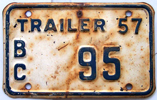
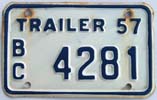
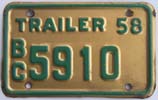
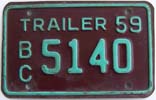
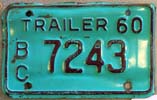
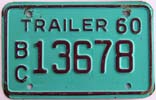
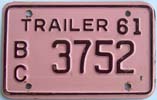
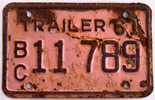

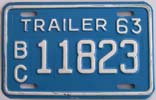

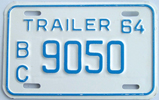
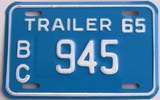
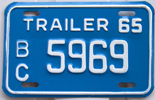

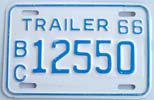
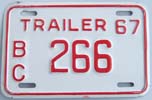
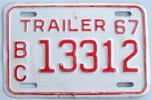
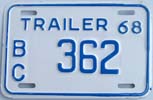
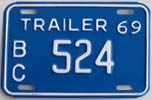
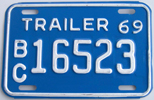
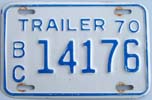
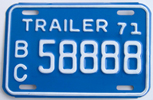
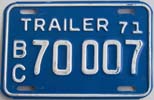


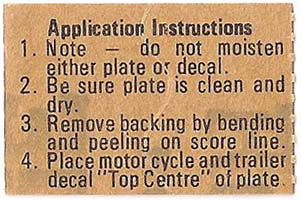
.jpg)
.jpg)










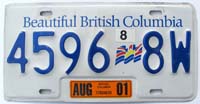




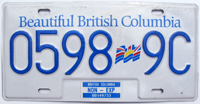
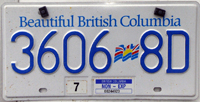

.jpg)